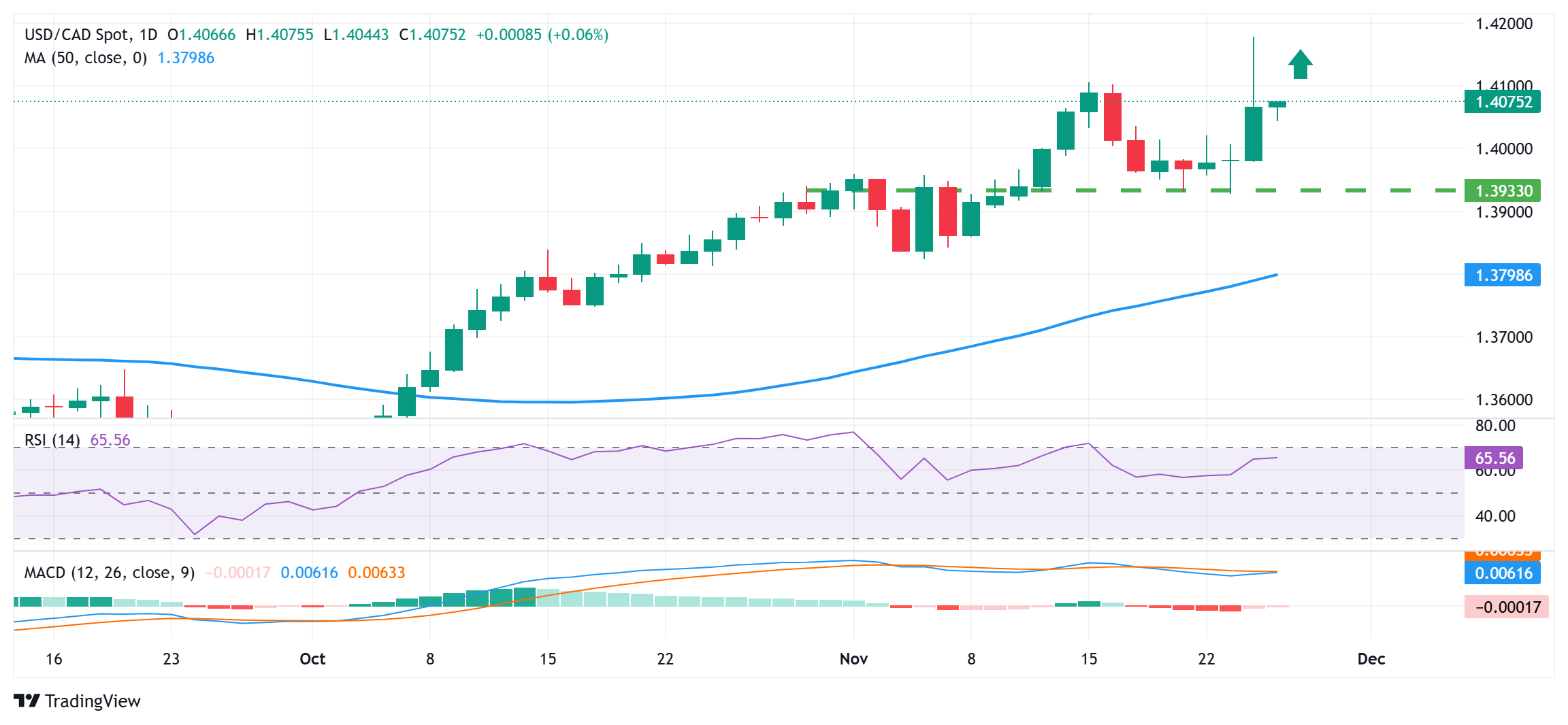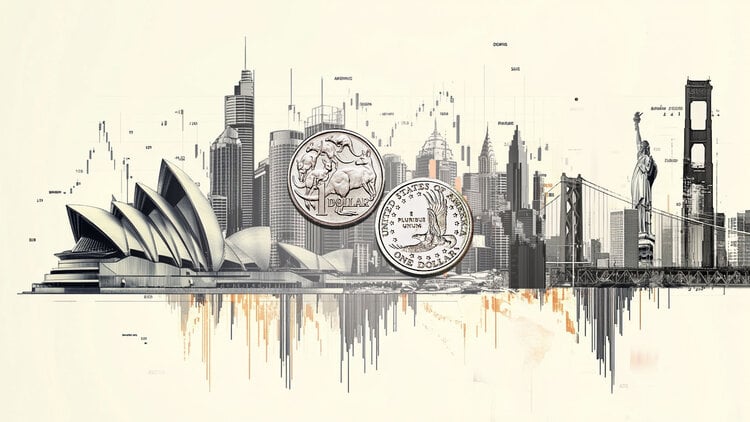- USD/CAD regains some positive traction and gains support from a combination of factors.
- Crude oil prices remain depressed and weigh on the CAD amid Trump’s tariff threats.
- The technical setup favors the bulls and supports the prospects for additional gains in the near term.
The USD/CAD pair is attracting some buyers following the previous day’s pullback from the highest level since April 2020 and is trading around the 1.4070 region during the Asian session on Wednesday. Meanwhile, the fundamental backdrop favors the bulls and suggests that the path of least resistance for spot prices is up.
The long-running conflict in the Middle East de-escalated after US President Joe Biden announced that Lebanon and Israel had agreed to a ceasefire. This, in turn, is not helping crude oil prices capitalize on Tuesday’s modest rebound from a one-week low. This, along with tariff threats from US President-elect Donald Trump, continues to weigh on the commodity-linked CAD. Added to this are expectations of a less dovish Federal Reserve (Fed), which could continue to act as a tailwind for the US Dollar (USD) and validate the positive outlook for the USD/CAD pair.
From a technical perspective, this week’s bounce from the 1.3930-1.3925 horizontal support and the positive oscillators on the daily chart support the prospects of a further near-term appreciating move for the USD/CAD pair. That said, it would still be prudent to wait for sustained strength above the 1.4100 level before opening new bullish positions. Spot prices could then aim to challenge the multi-year peak and reclaim the round figure of 1.4200. The momentum could eventually lift spot prices to the intermediate hurdle of 1.4265 en route to the April 2020 high, around the 1.4300 level.
On the other hand, the low of the Asian session, around the 1.4045 region, now seems to protect the immediate decline. Any further slippage could be seen as a buying opportunity and remain capped near the psychological level of 1.4000. The latter should act as a key pivot point, which if broken decisively could negate the constructive setup. The USD/CAD pair could then weaken further below the horizontal support of 1.3930-1.3925 and the round figure of 1.3200, towards testing the next support near the 1.3855 area en route towards the monthly low, around the 1.3825- region. 1.3820.
USD/CAD Daily Chart

The Canadian Dollar FAQs
The key factors that determine the price of the Canadian Dollar (CAD) are the level of interest rates set by the Bank of Canada (BoC), the price of oil, Canada’s main export product, the health of its economy, inflation and the trade balance, which is the difference between the value of Canadian exports and its imports. Other factors are market confidence, that is, whether investors bet on riskier assets (risk-on) or look for safe assets (risk-off), with the risk-on being positive for the CAD. As its largest trading partner, the health of the US economy is also a key factor influencing the Canadian dollar.
The Bank of Canada (BoC) exerts significant influence over the Canadian Dollar by setting the level of interest rates that banks can lend to each other. This influences the level of interest rates for everyone. The BoC’s main objective is to keep inflation between 1% and 3% by adjusting interest rates up or down. Relatively high interest rates are usually positive for the CAD. The Bank of Canada can also use quantitative easing and tightening to influence credit conditions, with the former being negative for the CAD and the latter being positive for the CAD.
The price of oil is a key factor influencing the value of the Canadian Dollar. Oil is Canada’s largest export, so the price of oil tends to have an immediate impact on the value of the CAD. Generally, if the price of oil rises, the CAD also rises, as aggregate demand for the currency increases. The opposite occurs if the price of oil falls. Higher oil prices also tend to lead to a higher probability of a positive trade balance, which also supports the CAD.
Although inflation has traditionally always been considered a negative factor for a currency, as it reduces the value of money, the opposite has actually happened in modern times, with the relaxation of cross-border capital controls. Higher inflation often leads central banks to raise interest rates, attracting more capital inflows from global investors looking for a lucrative place to store their money. This increases the demand for the local currency, which in the case of Canada is the Canadian Dollar.
The published macroeconomic data measures the health of the economy and may have an impact on the Canadian dollar. Indicators such as GDP, manufacturing and services PMIs, employment and consumer confidence surveys can influence the direction of the CAD. A strong economy is good for the Canadian dollar. Not only does it attract more foreign investment, but it may encourage the Bank of Canada to raise interest rates, resulting in a stronger currency. However, if economic data is weak, the CAD is likely to fall.
Source: Fx Street
I am Joshua Winder, a senior-level journalist and editor at World Stock Market. I specialize in covering news related to the stock market and economic trends. With more than 8 years of experience in this field, I have become an expert in financial reporting.







